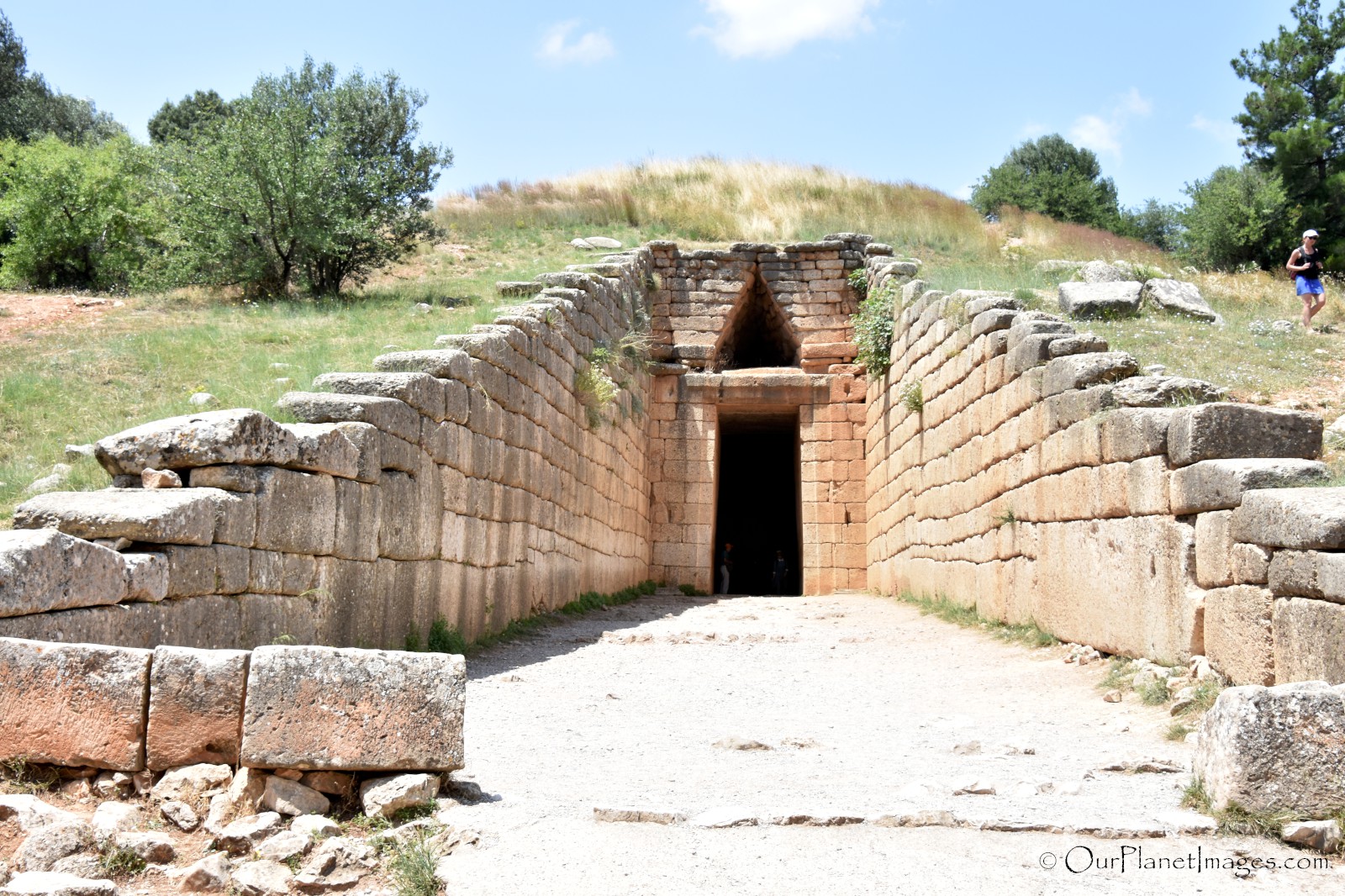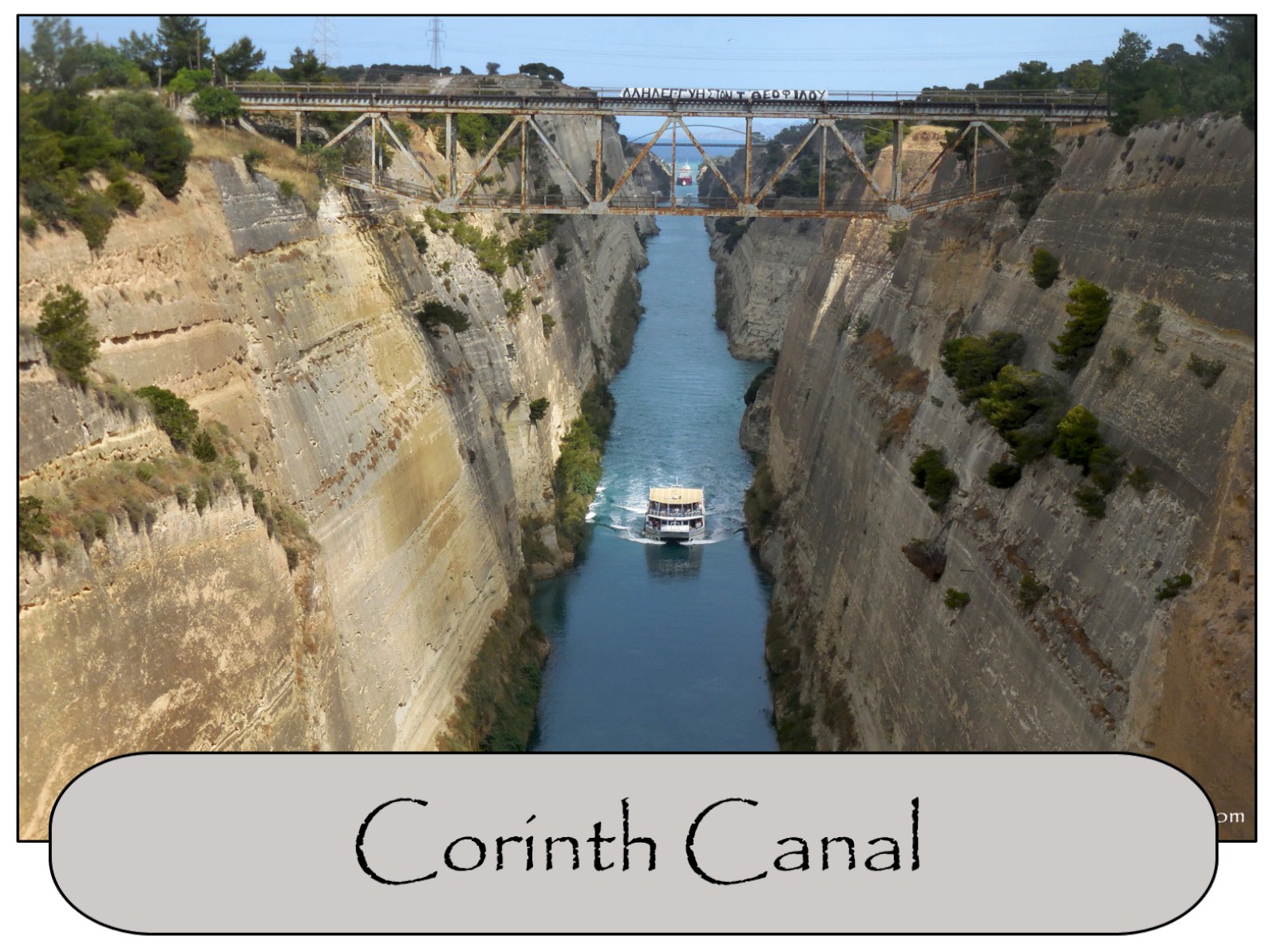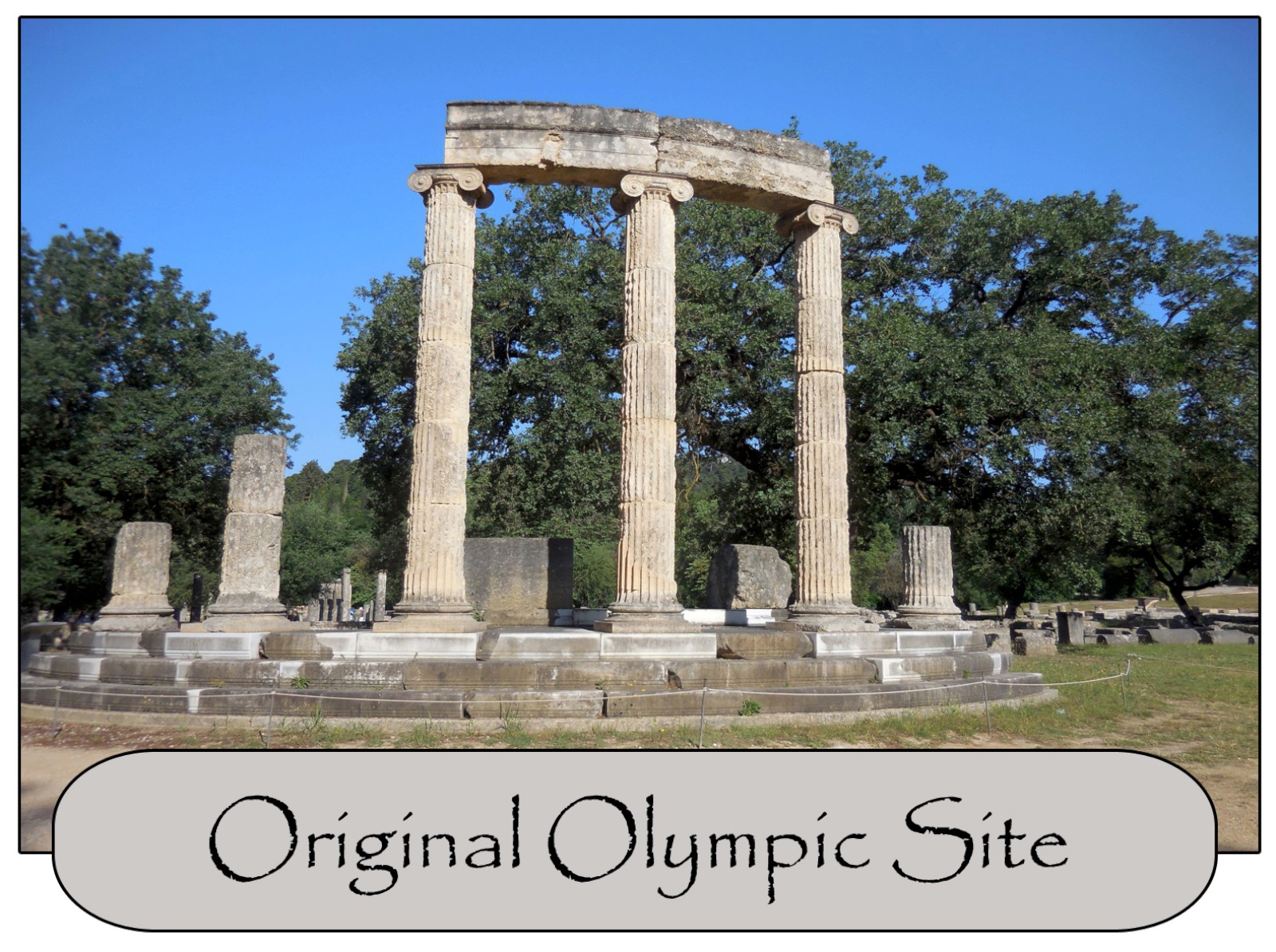Many of the legends of Ancient Greece have Mycenaean origins.
Mycenae is one of the most important archaeological sites of Greece. The citadel is located near the seashore in the northeast Peloponnese Peninsula. Mycenaean is the culture that dominated mainland Greece, the Aegean islands and the shores of Asia Minor during the late Bronze Age Era, approximately 1600 to 1000 BC.
Many of the details about Mycenae can only be accredited to Greek legends.
The founding of Mycenae is not certain but Greek legends say that it was founded by the legendary hero Perseus (son of Zeus and Danae).
There are several speculations about how the place took its name but according to Homer, it is named after a beautiful nymph called Mycene.
Agamemnon was the mythical King of Mycenae in Greek legend that famously led the Greek army to victory in the Trojan War. Tricking the Trojans with the legendary Trojan horse that hid Greek warriors inside.
General View of Mycenae
The Mycenaean citadel is a large ruins that is located on a hill top. The walls are built of large stacked rocks and large portions of the citadel are in a state of disrepair. Some places of the citadel are in better conditions and these will be identified later in the post.
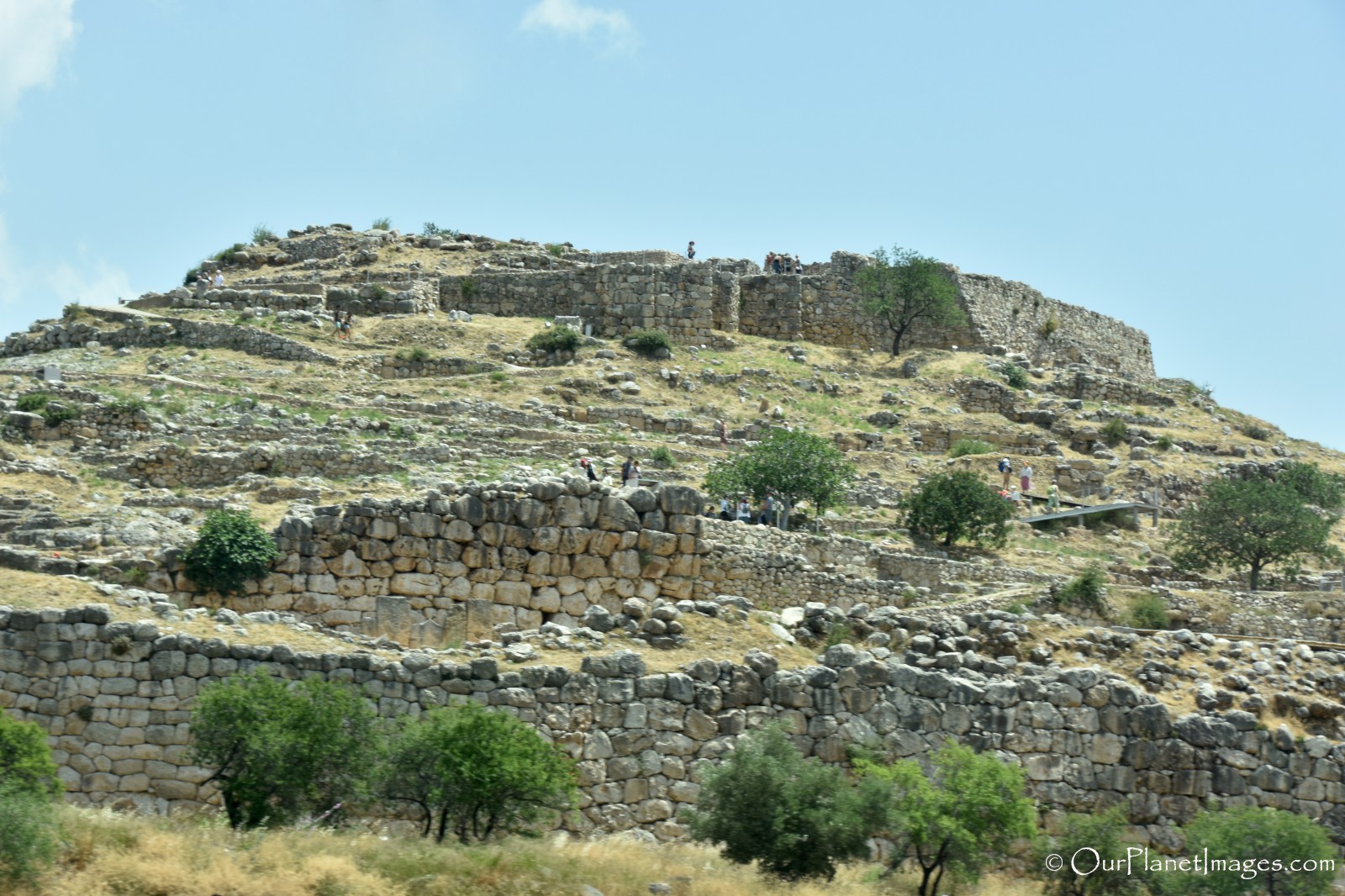
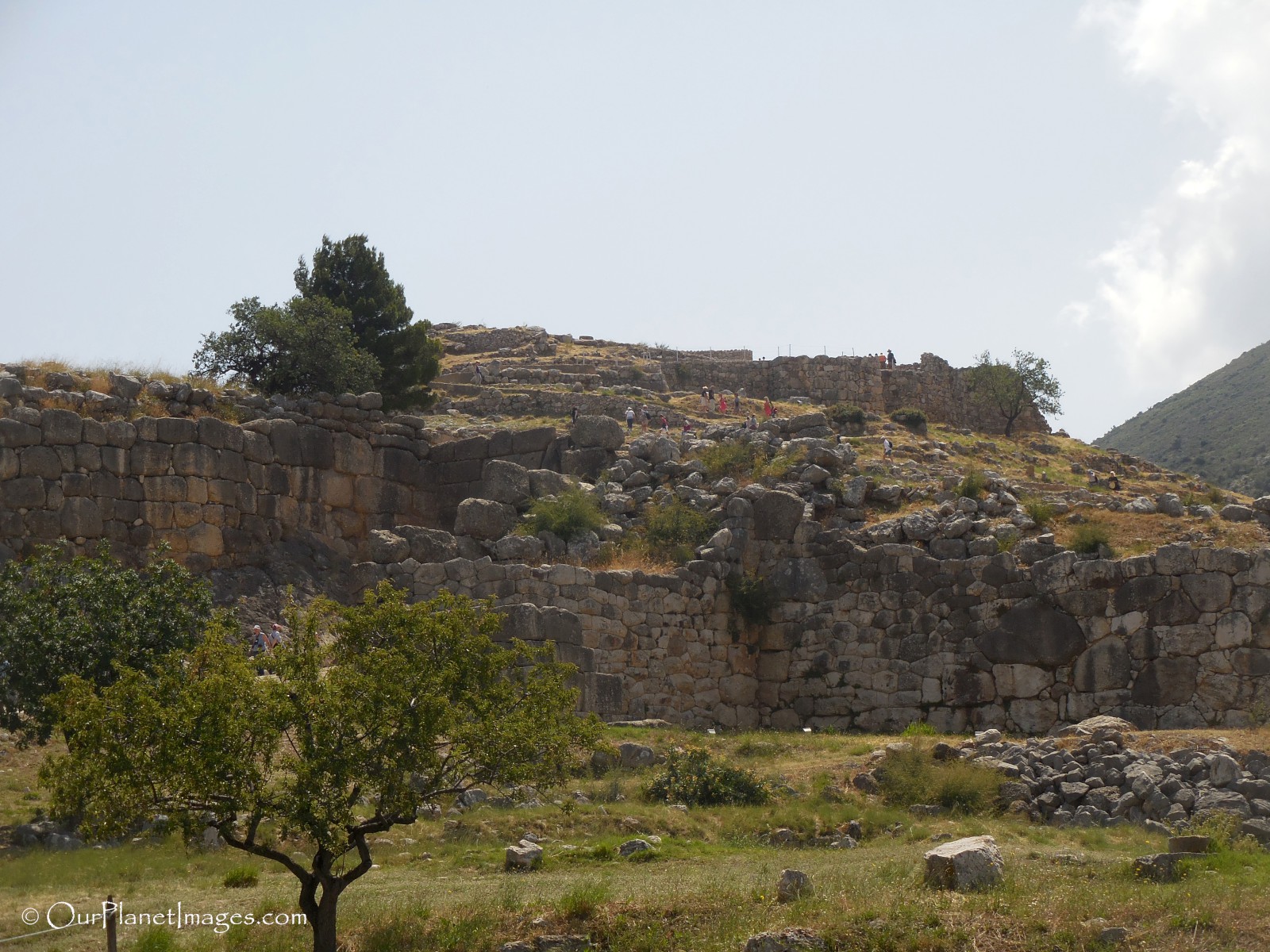
View from Mycenae
The citadel hilltop locations provides spectacular view of the surrounding area.
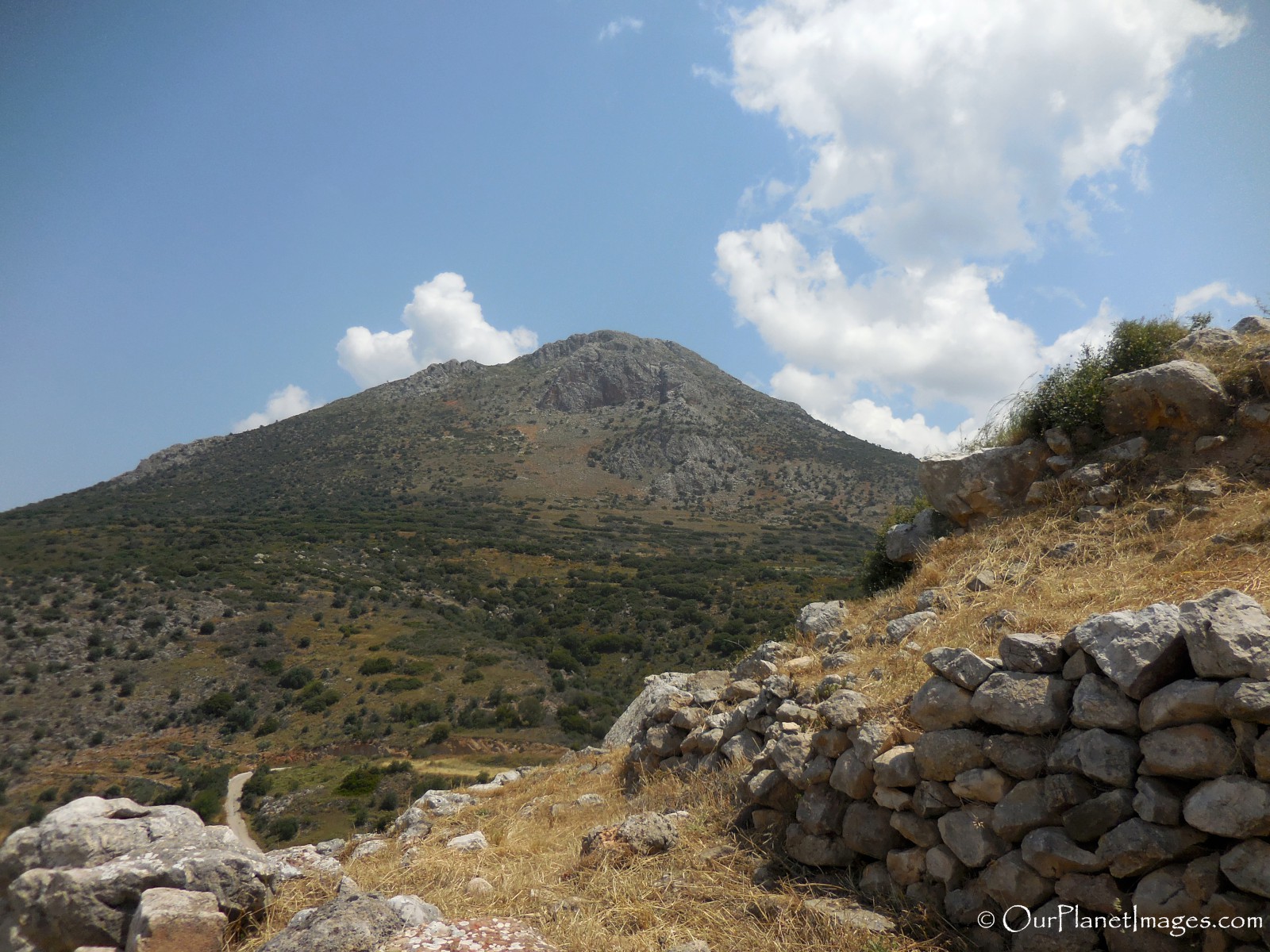
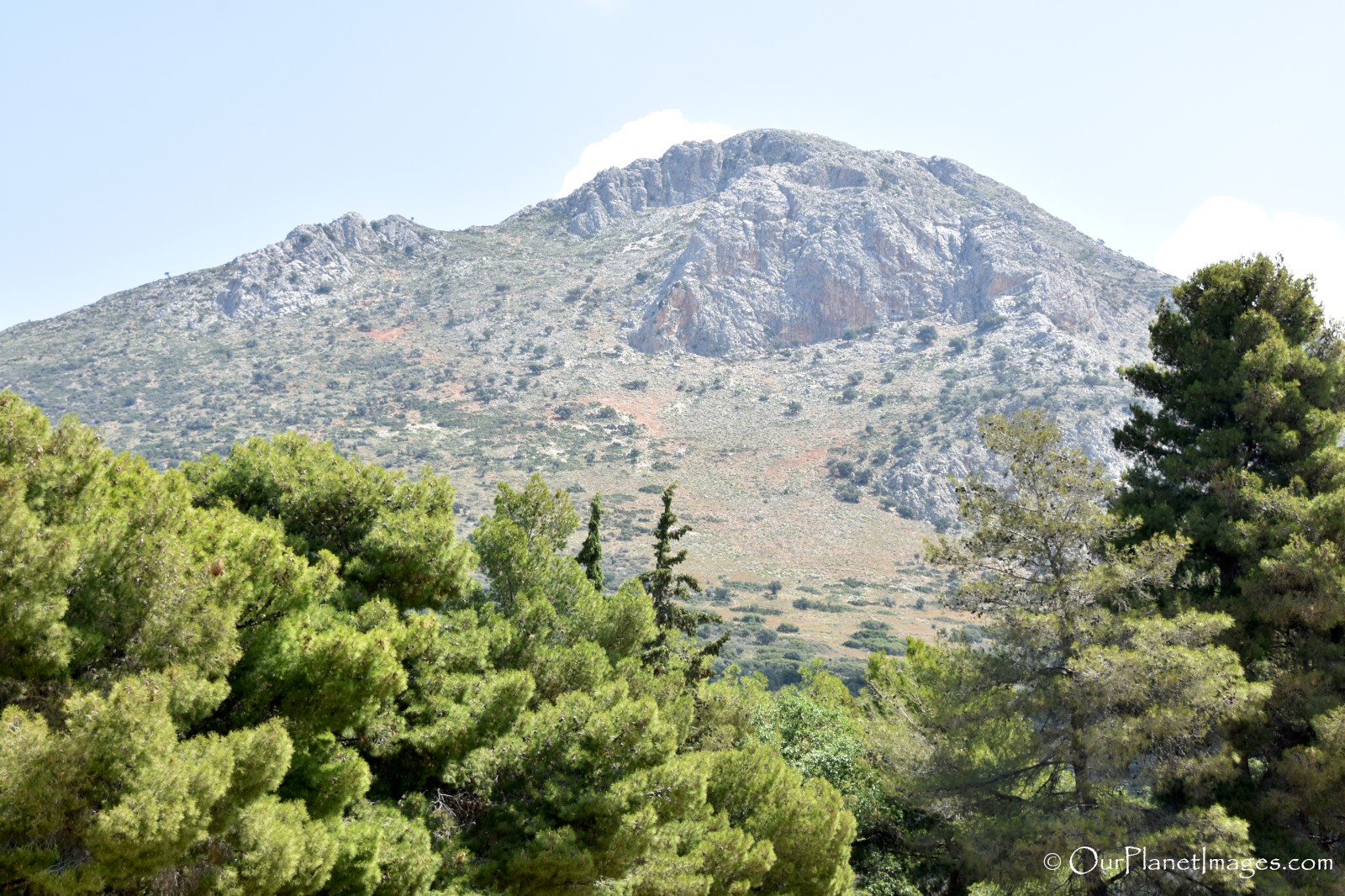
Lion Gate
The Lion Gate guards and provides the main access to the citadel. The two lions above the gate is the first example of monumental sculpture in the European continent. The lions meaning is unknown but the triangular shape of the sculpture acts as a relieving triangle for the door below. Its shape distributes the weight from above the door to the sides protecting it from breakage. The gate was closed by a heavy double wooden door which were secured by a sliding bar.

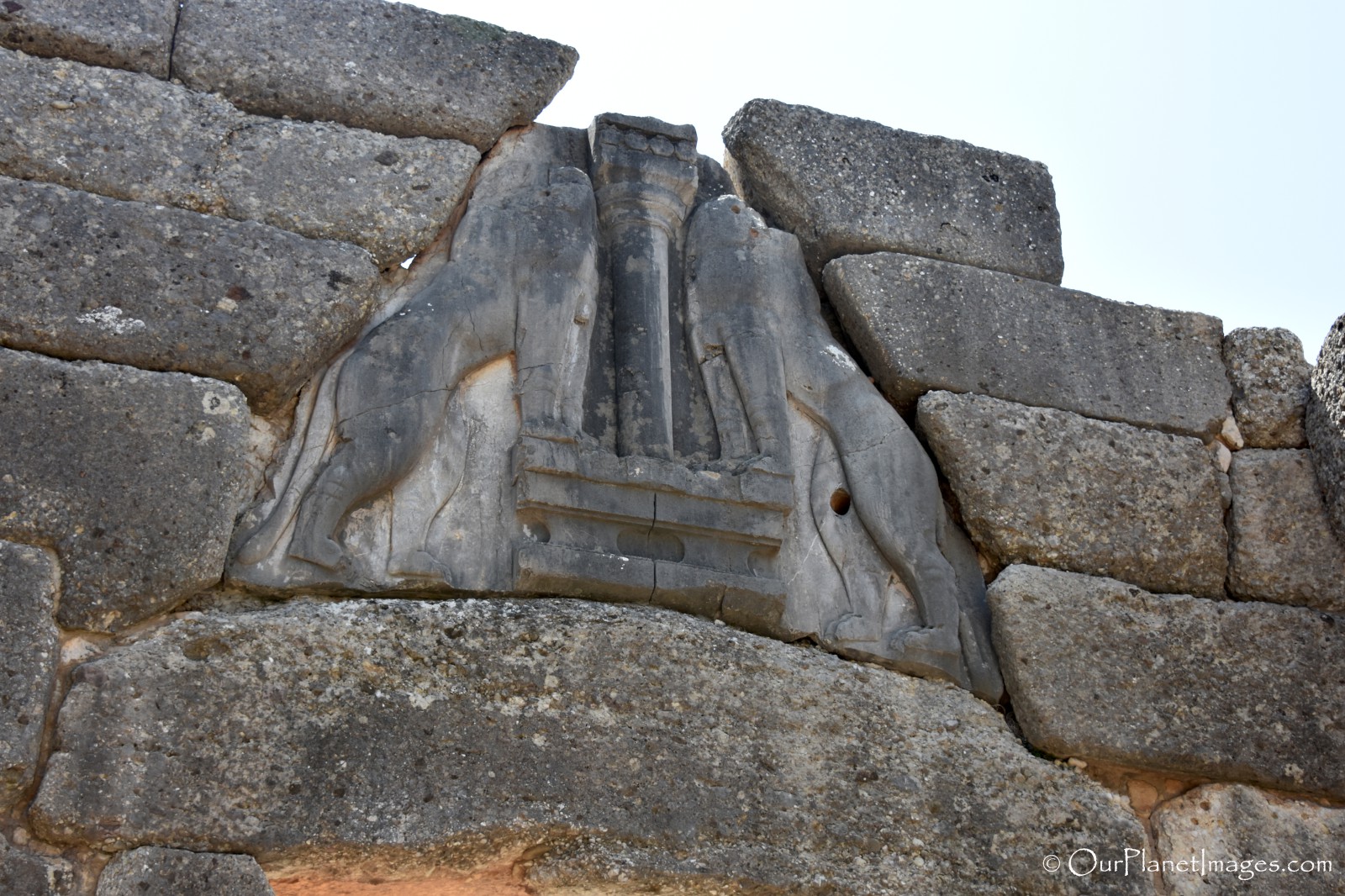
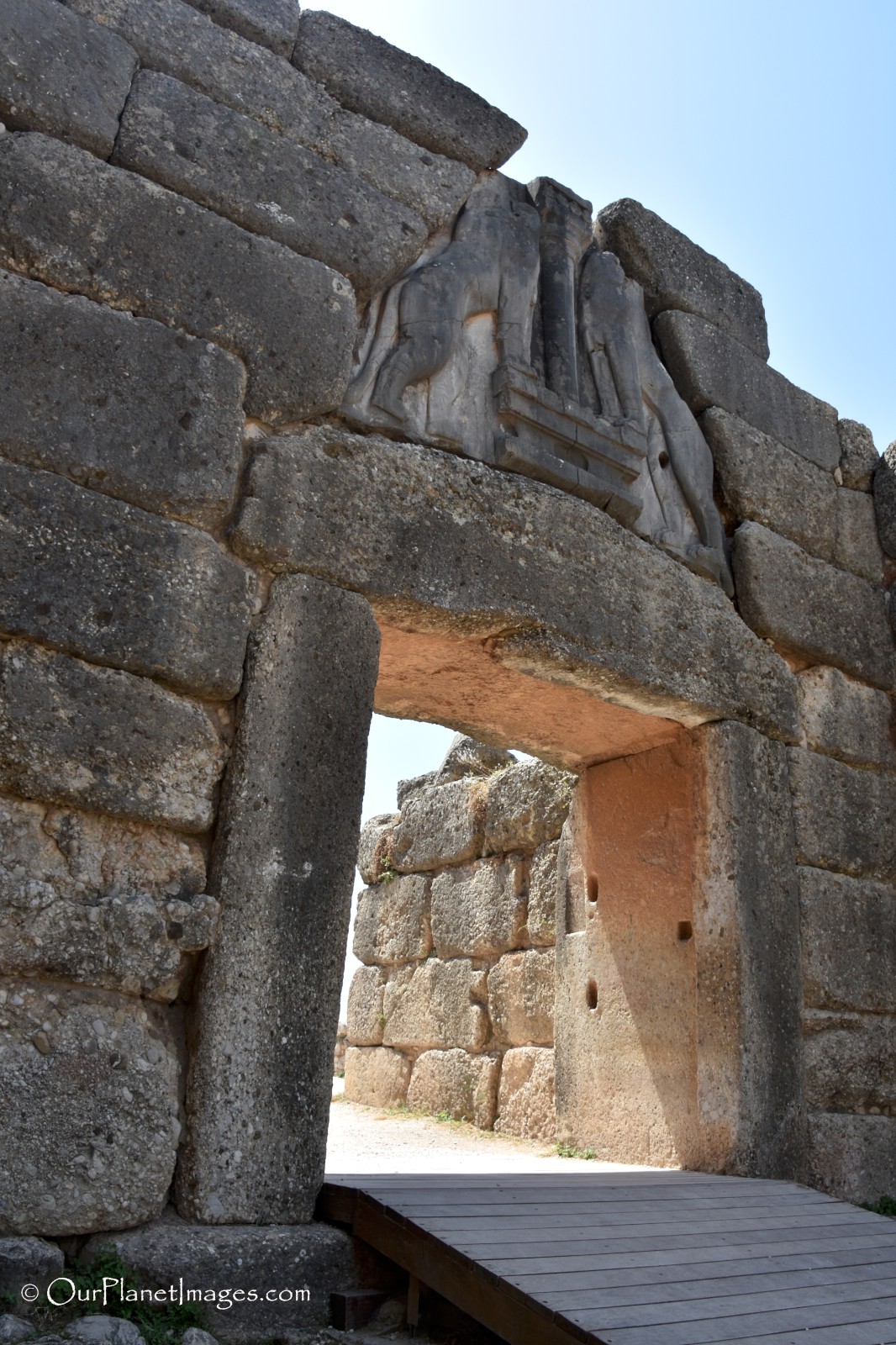
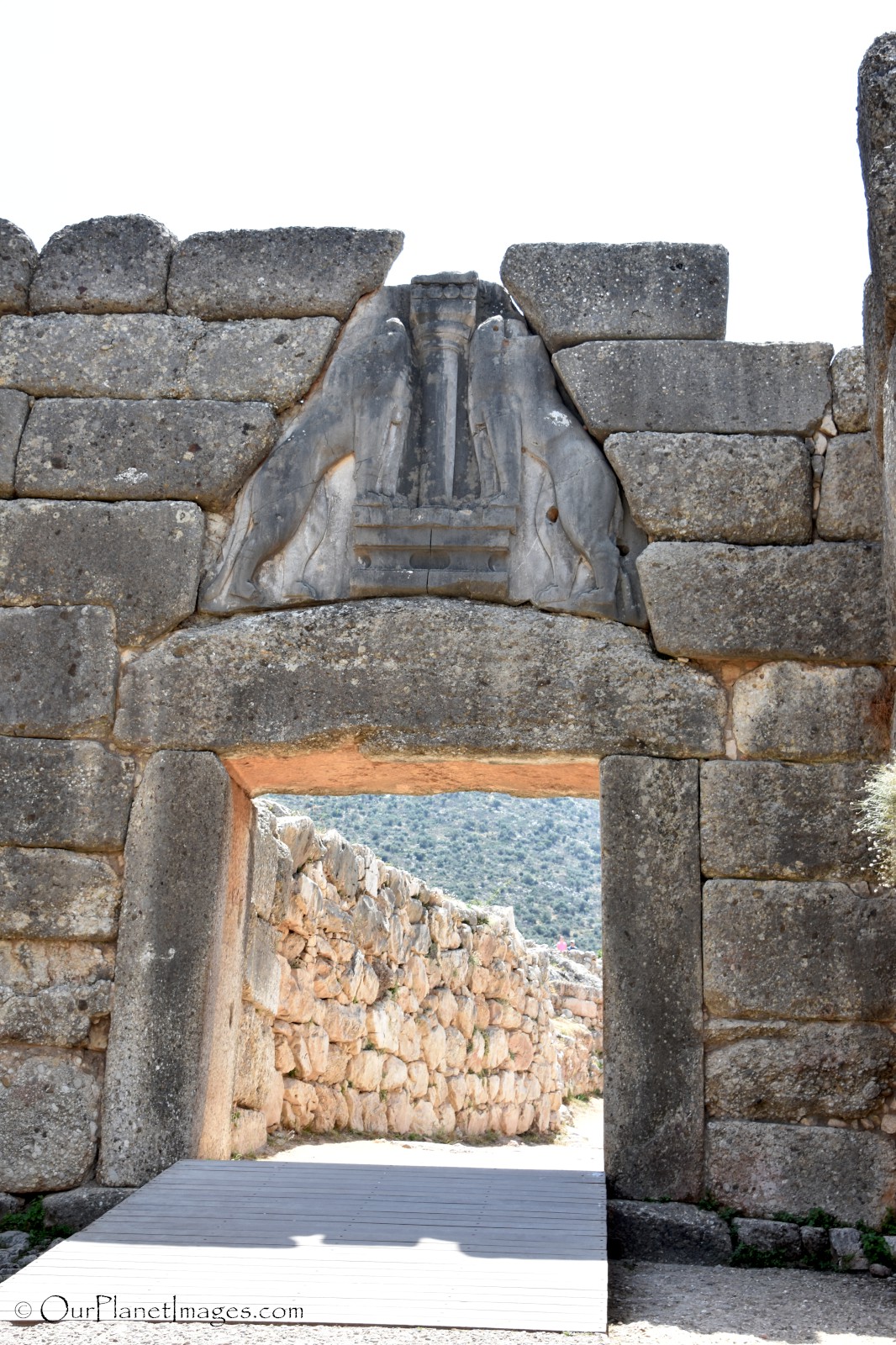
Grave Circle A
Grave Circle A was the location of the royal burials where many priceless Mycenaean artifacts were found. These artifact are on display at the National Archaeological Museum of Athens and the Mycenae Museum. The Grave Circle A has a diameter of 27 meter and is located on the right side of the Lion Gate. The grave is enclosed by a double ring of upright stone slabs. It is speculated that the area between the two rings were filled with smaller stones and then capped with large rectangular slabs.
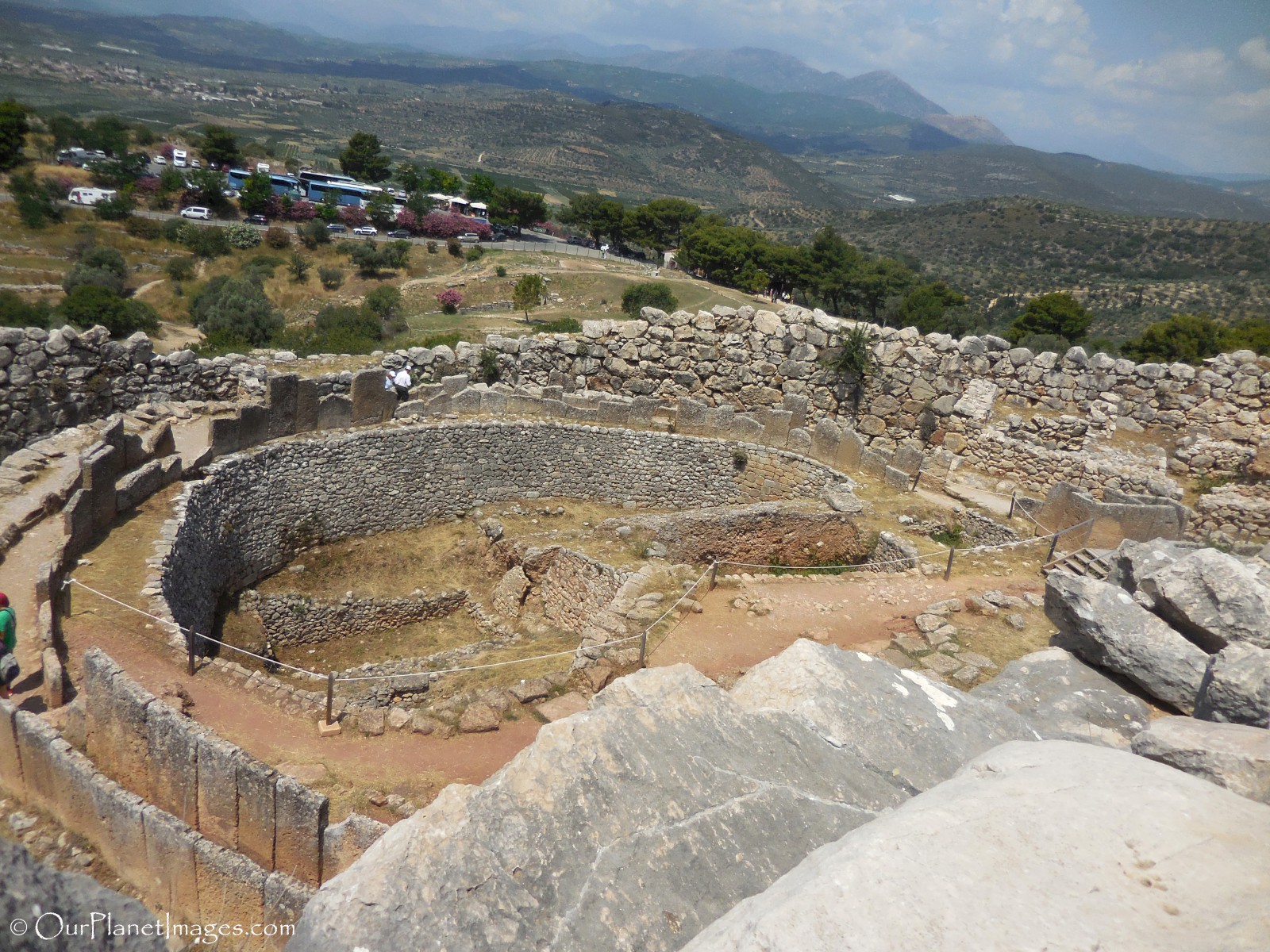
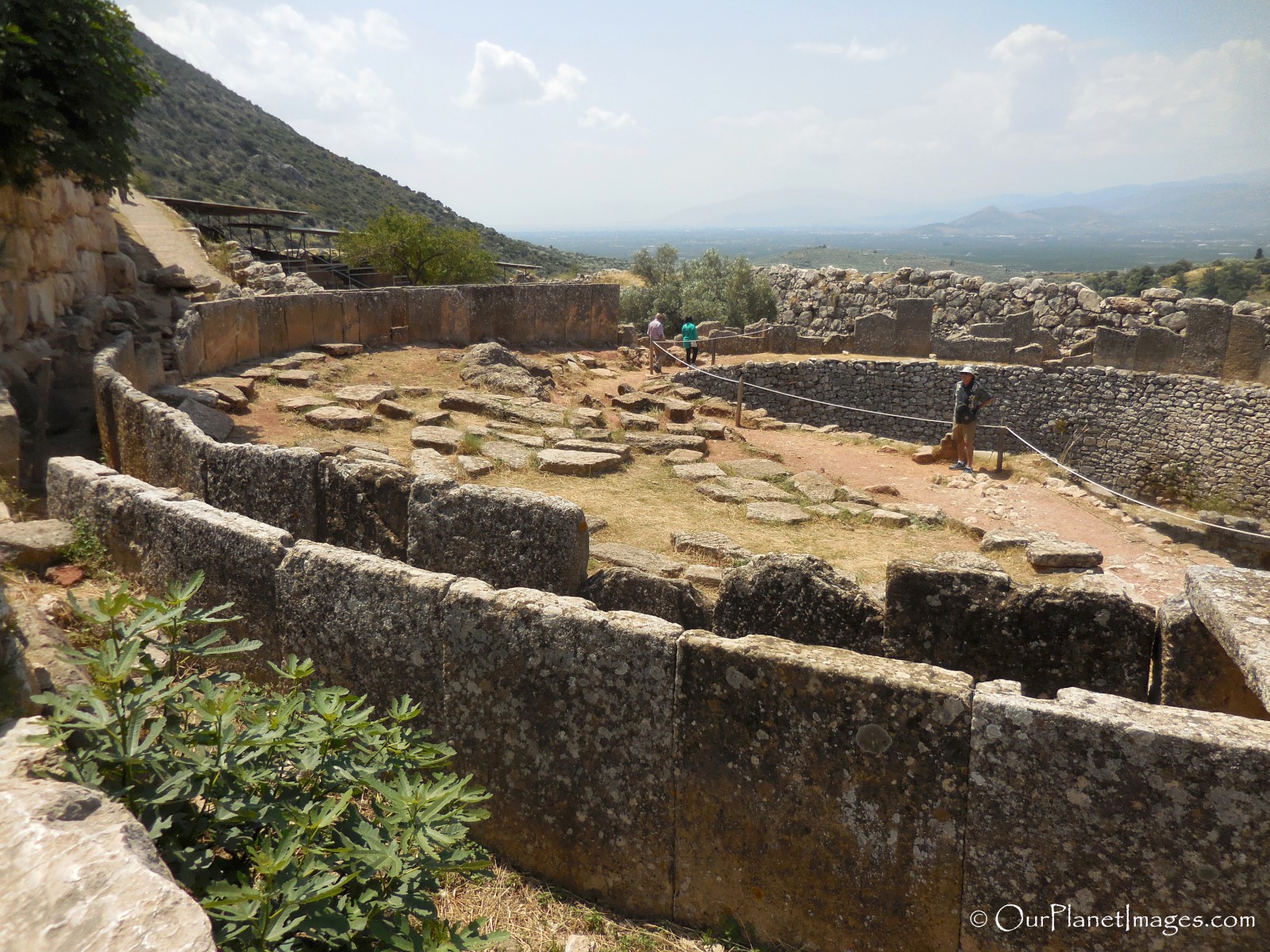

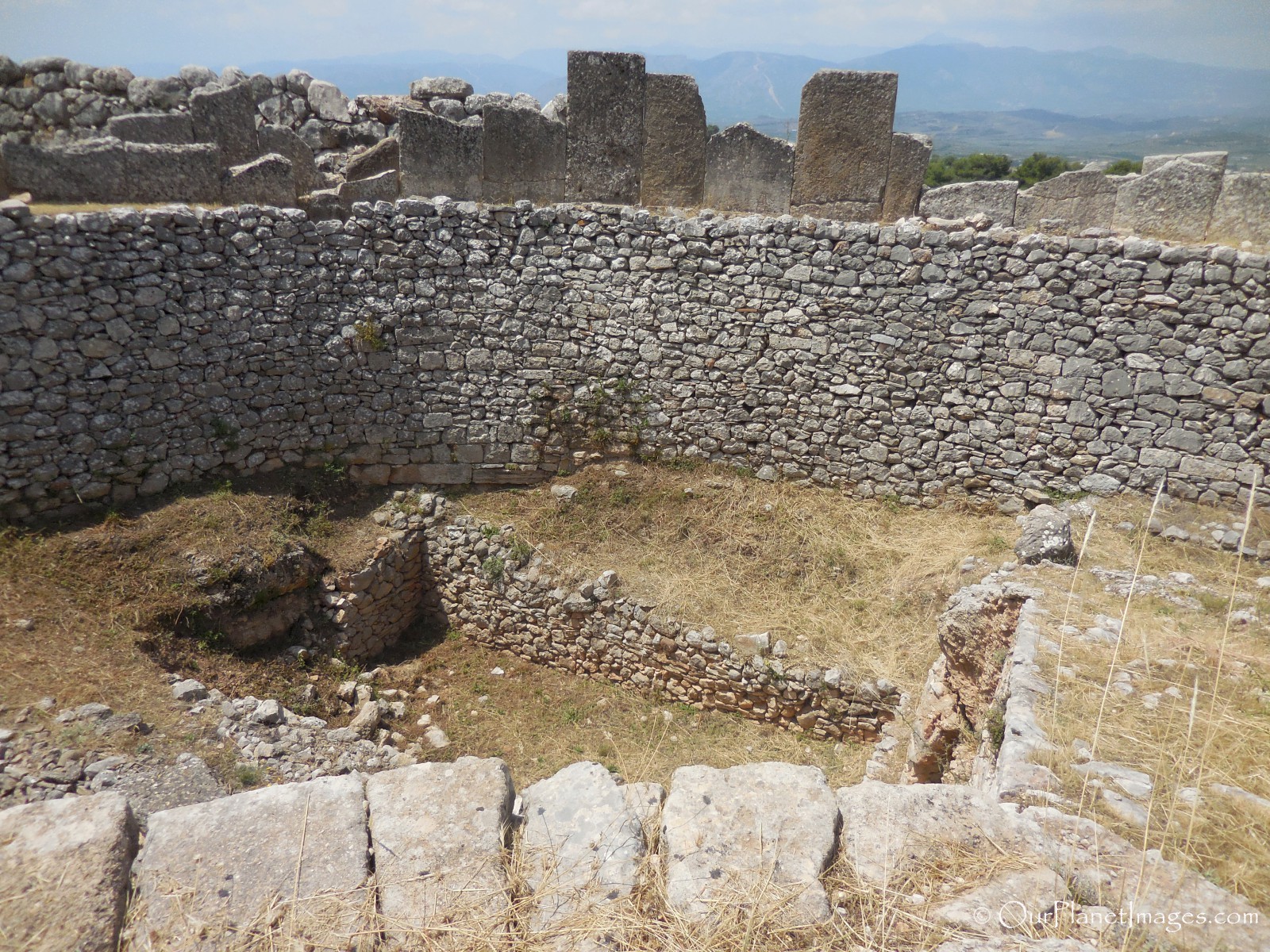
Treasure of Atreus
The Treasure of Atreus is located a short distance from the citadel and it is the best preserved tholos tomb found. It is believed that it was the tomb of Atreus, the father of Agamemnon. The tomb was never buried by earth so it was robbed in ancient times and there is no knowledge of artifact that were buried in the tomb.
The corridor leading to the entrance is 35 meters long by 6 meters wide and the stones were waterproofed with clay. The door opening is 5.5 meters high with an open triangle above the stone door plate.
The inside of the tomb is 14.5 meters in diameter and 13 meters high. The walls of the tomb are made of 33 circles of stones where one circle overlaps the circle immediately below. Each circle is smaller than the circle below and the top of the tomb is a single stone. When the stones were in place, masons carved the overlapping pieces leaving a smooth wall.
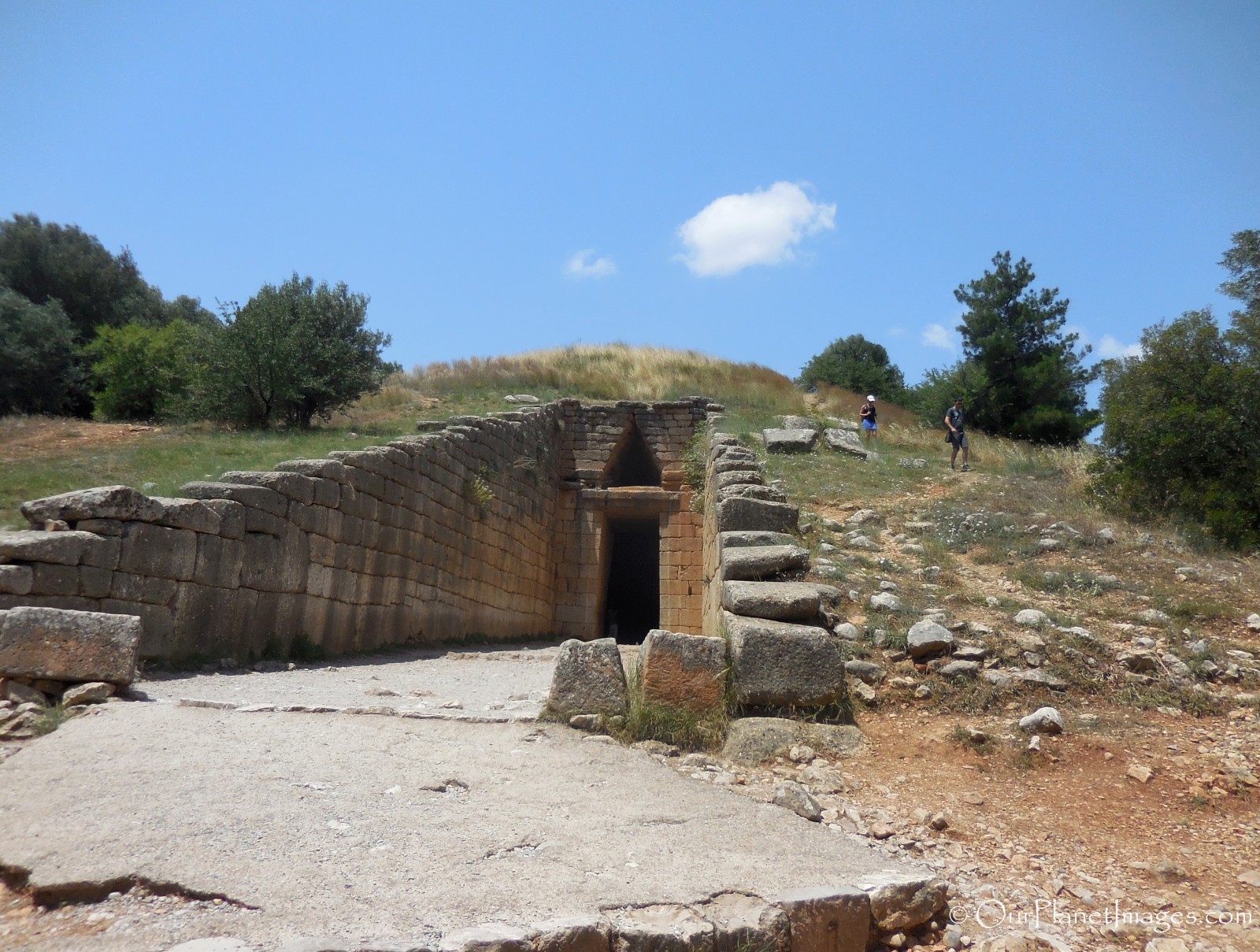
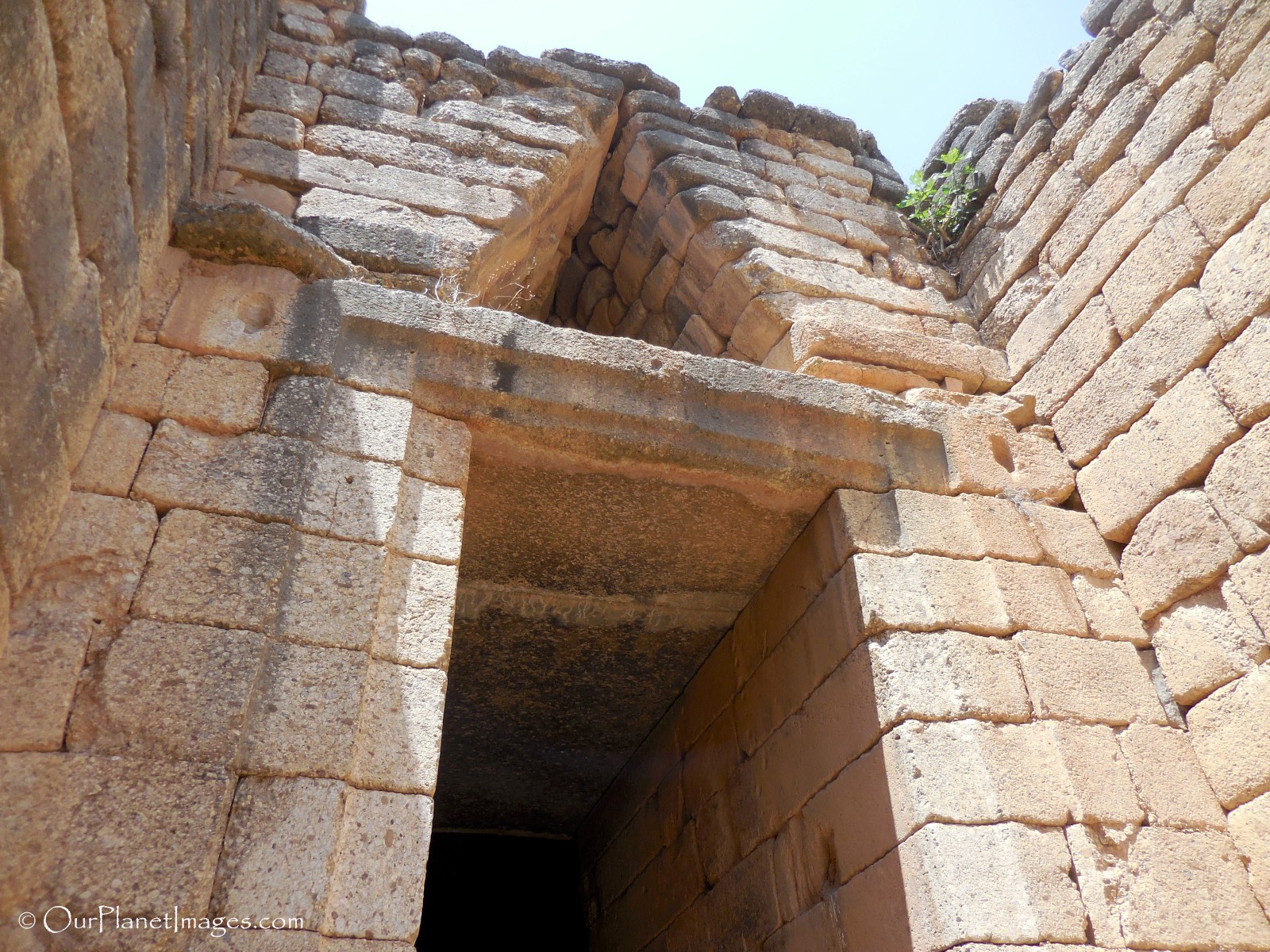
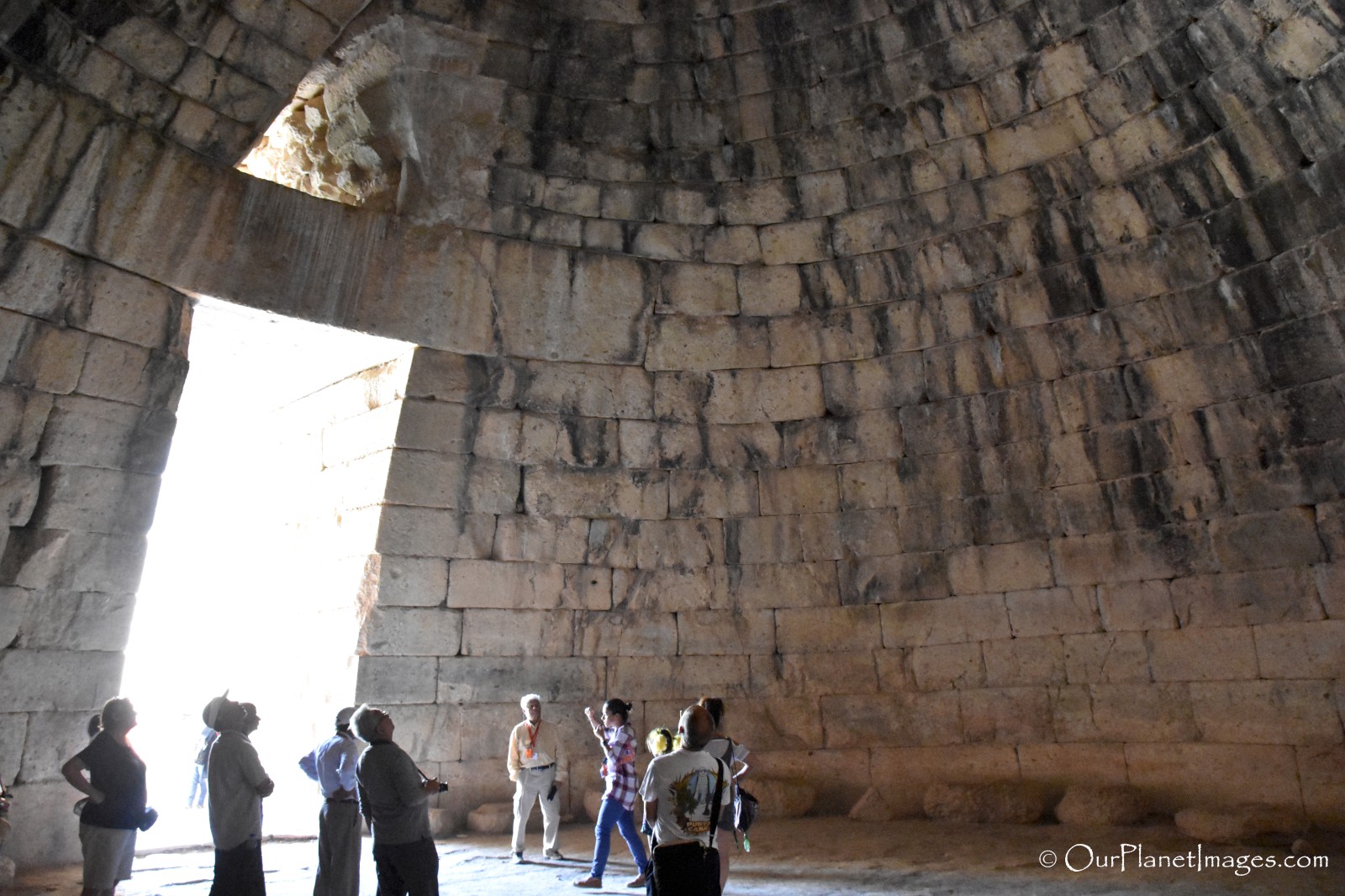
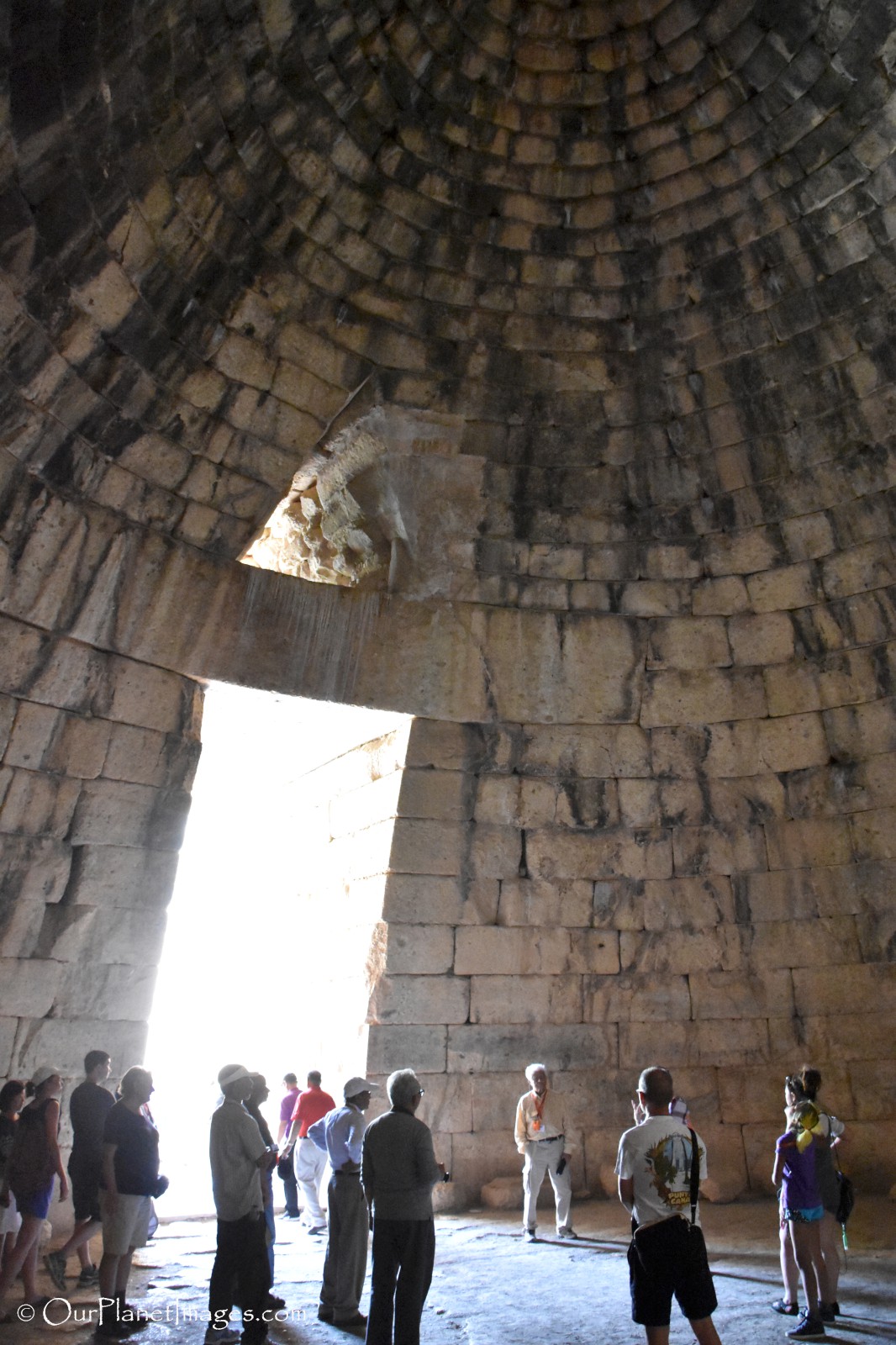
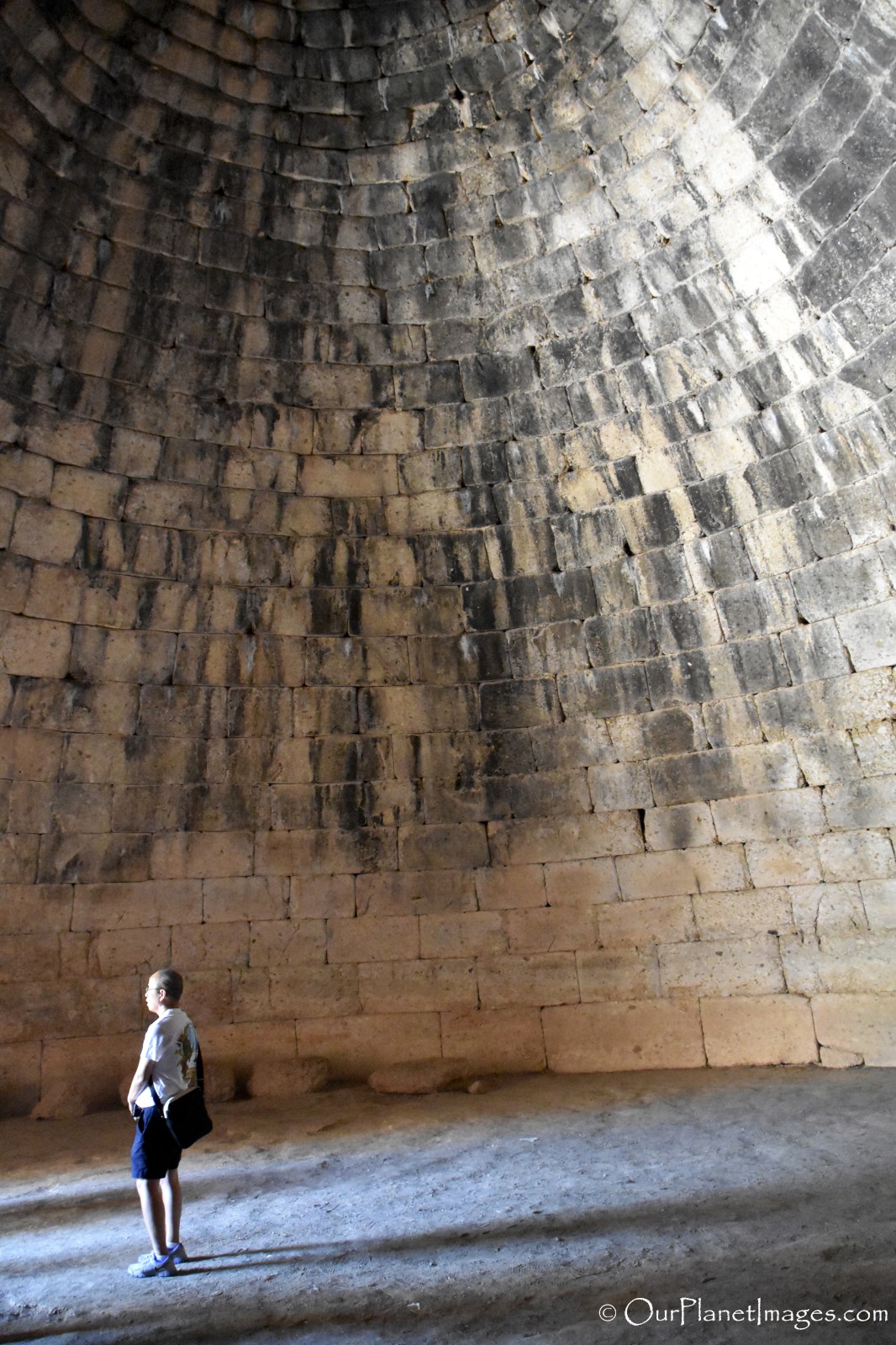
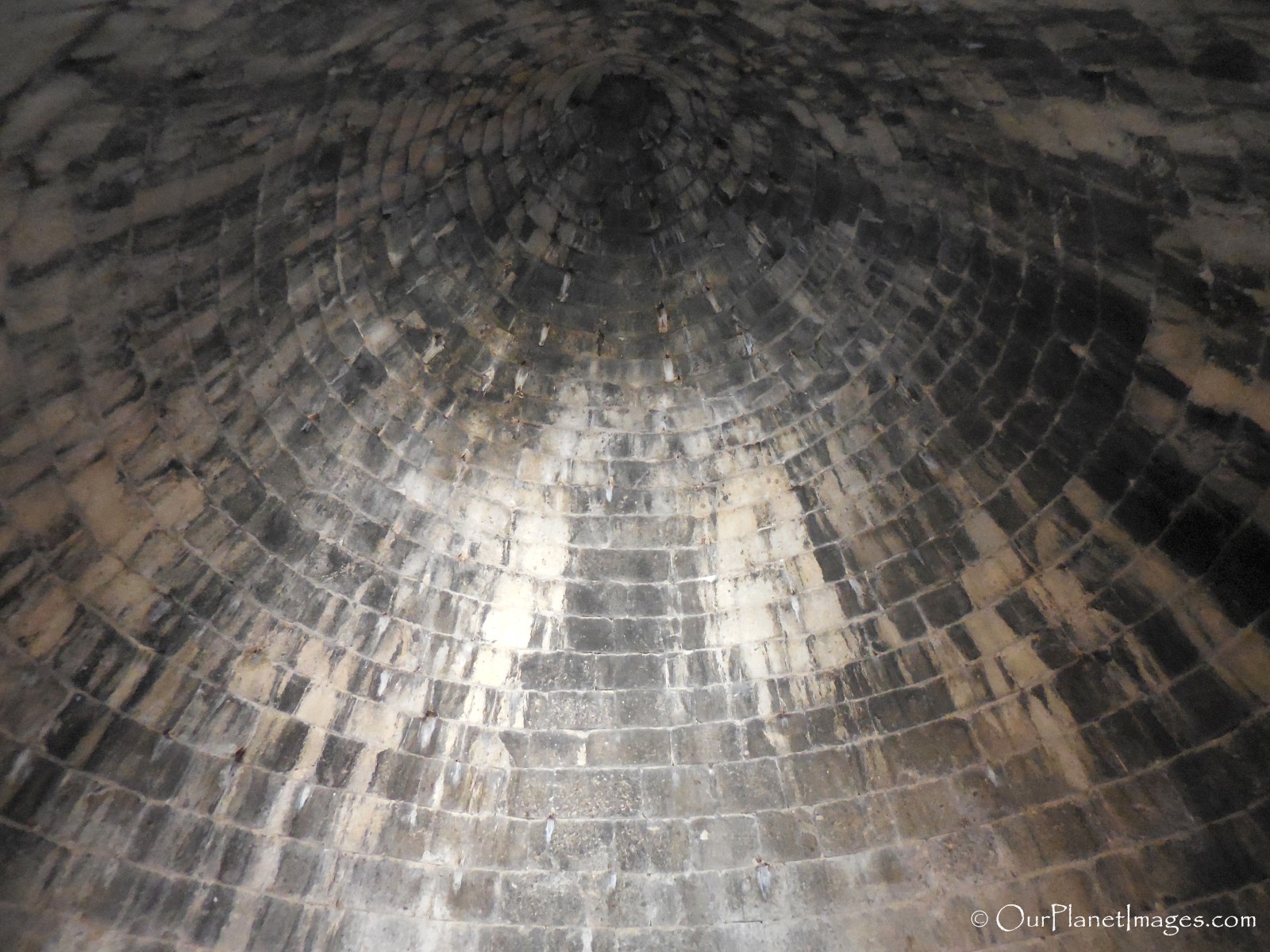
Images of Mycenae Citadel Ruins
As mentioned previously, a majority of the site is in a state of disrepair but it is still interesting to see some of the portions that are remaining. I have included several photos to provide a view of the overall condition of the ruins.
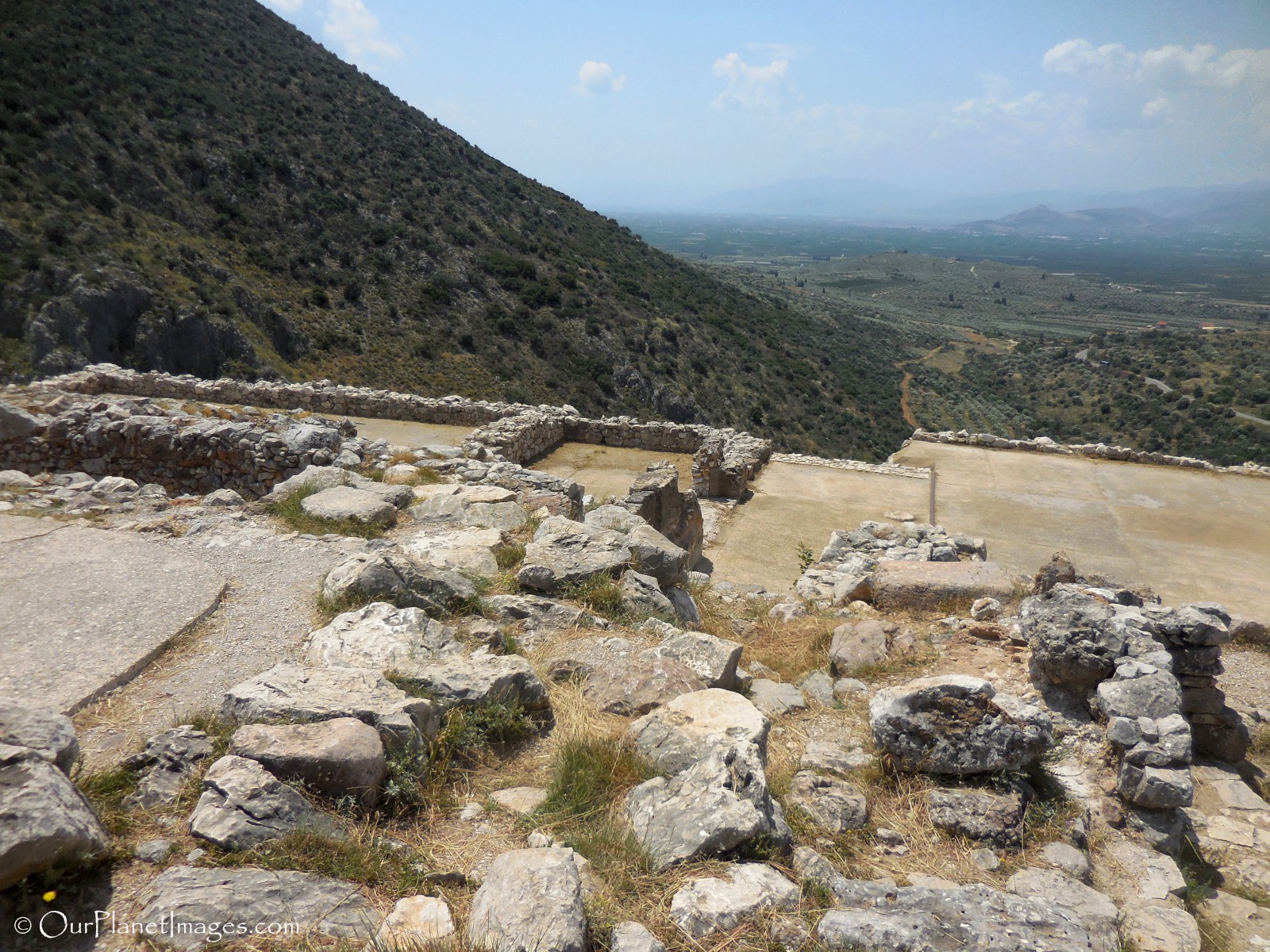
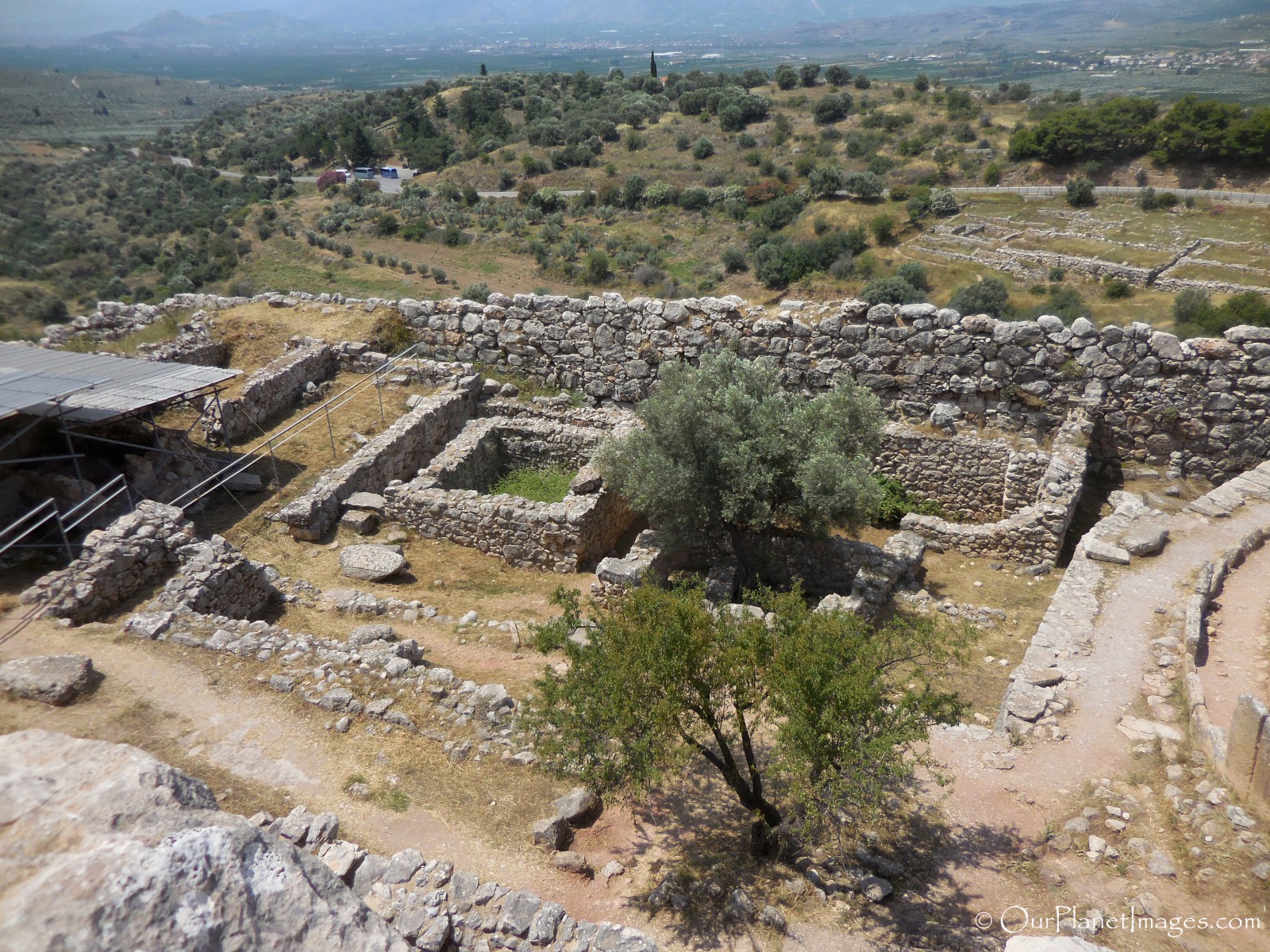

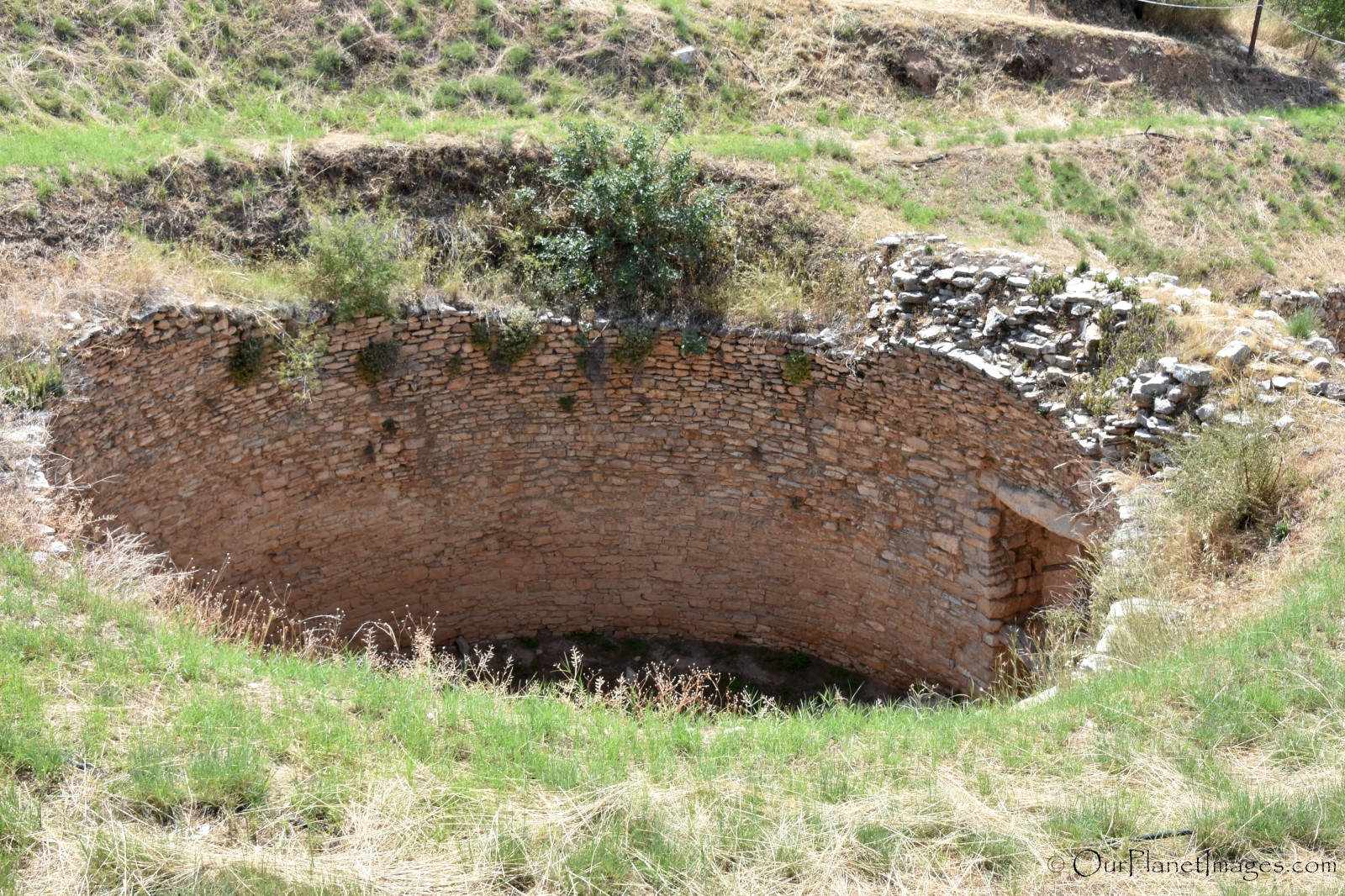
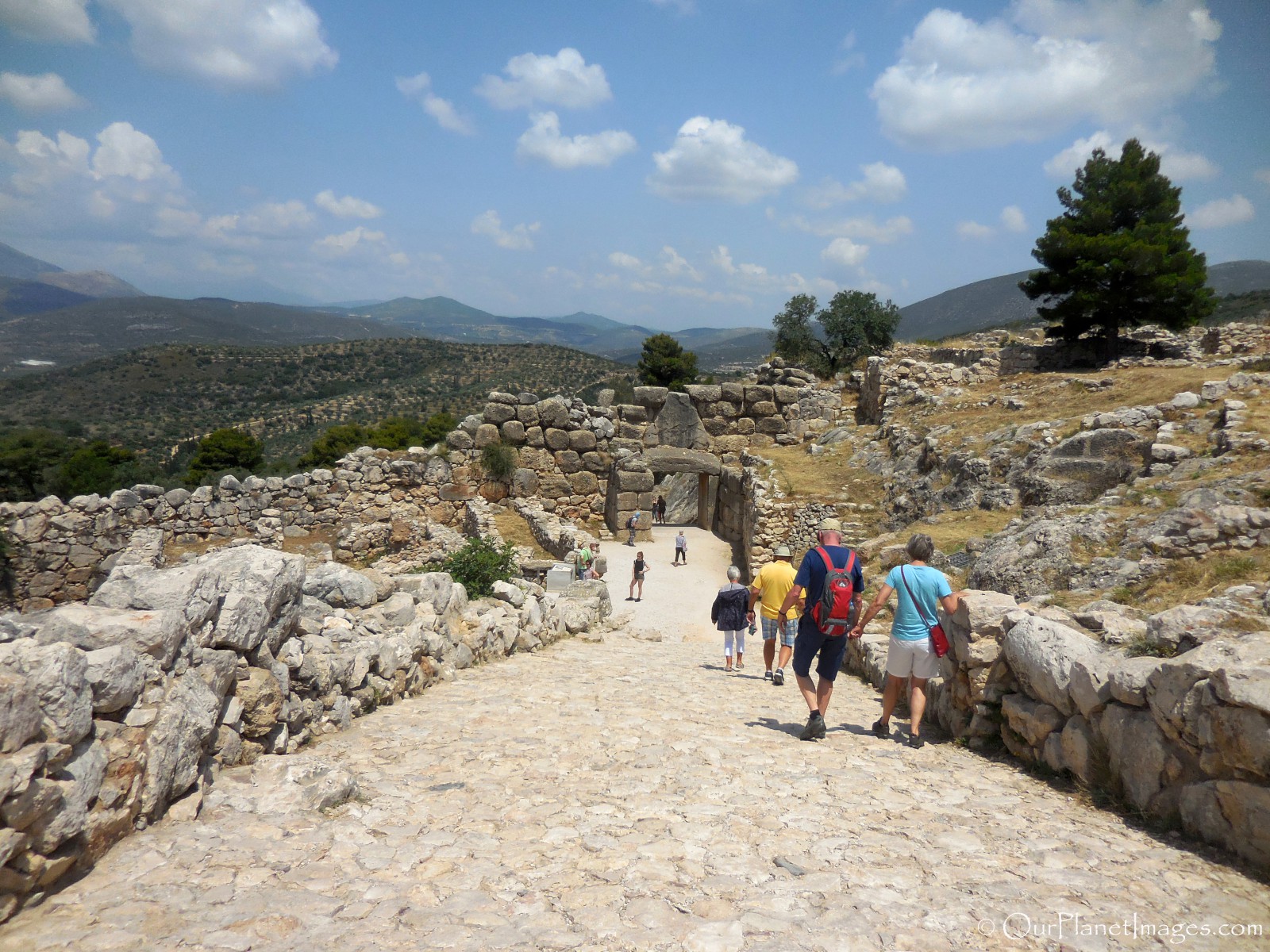
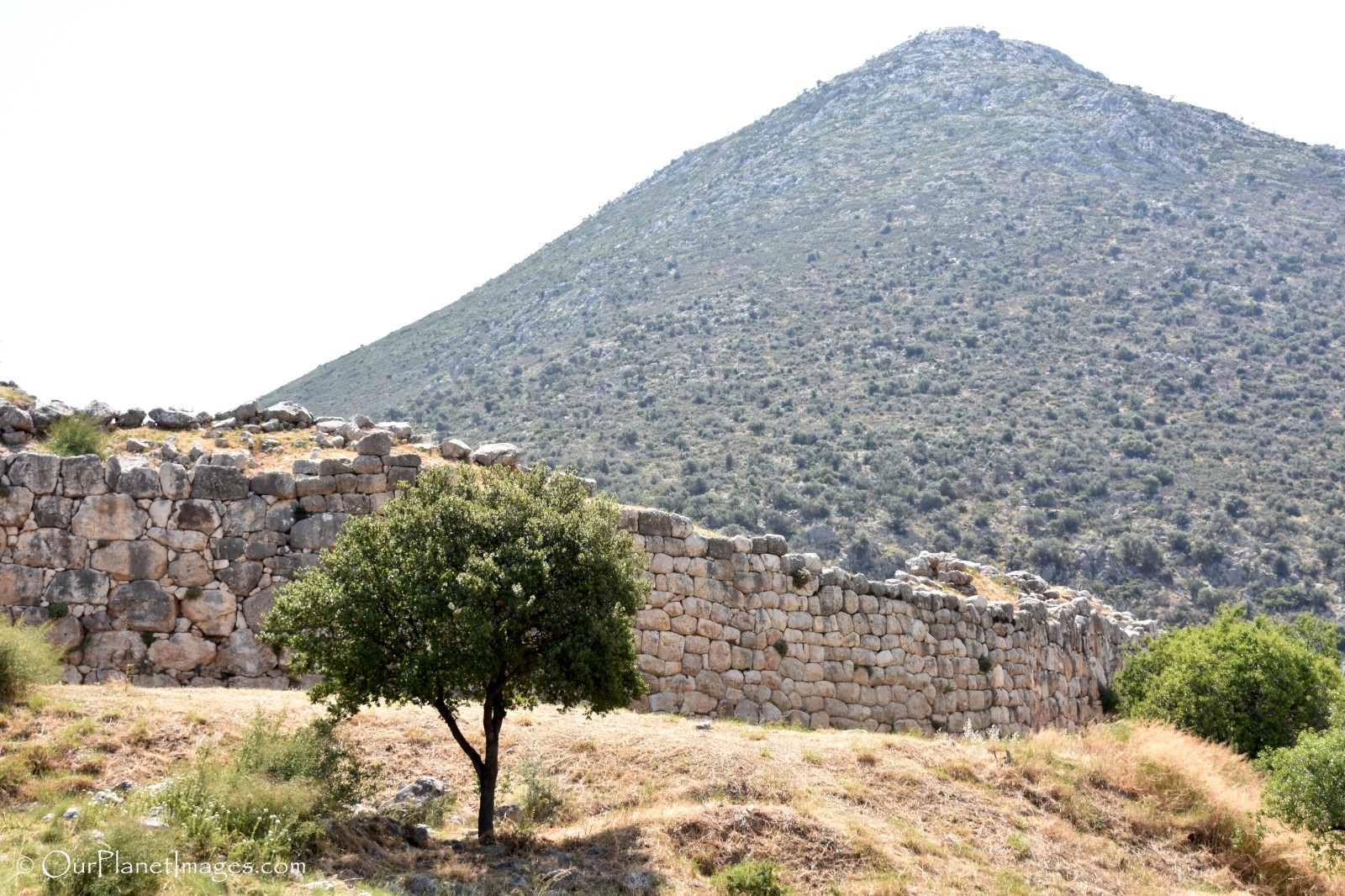
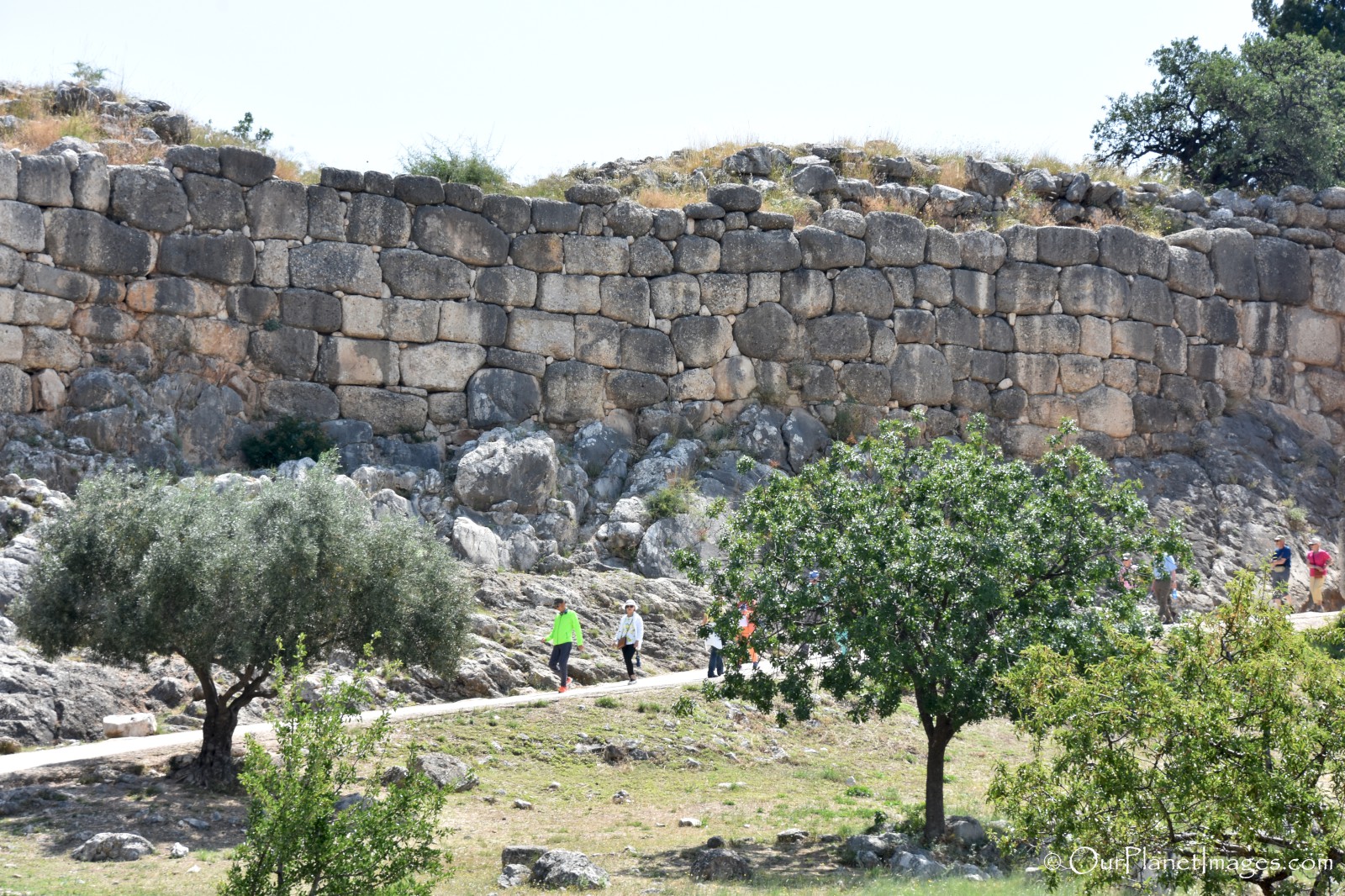

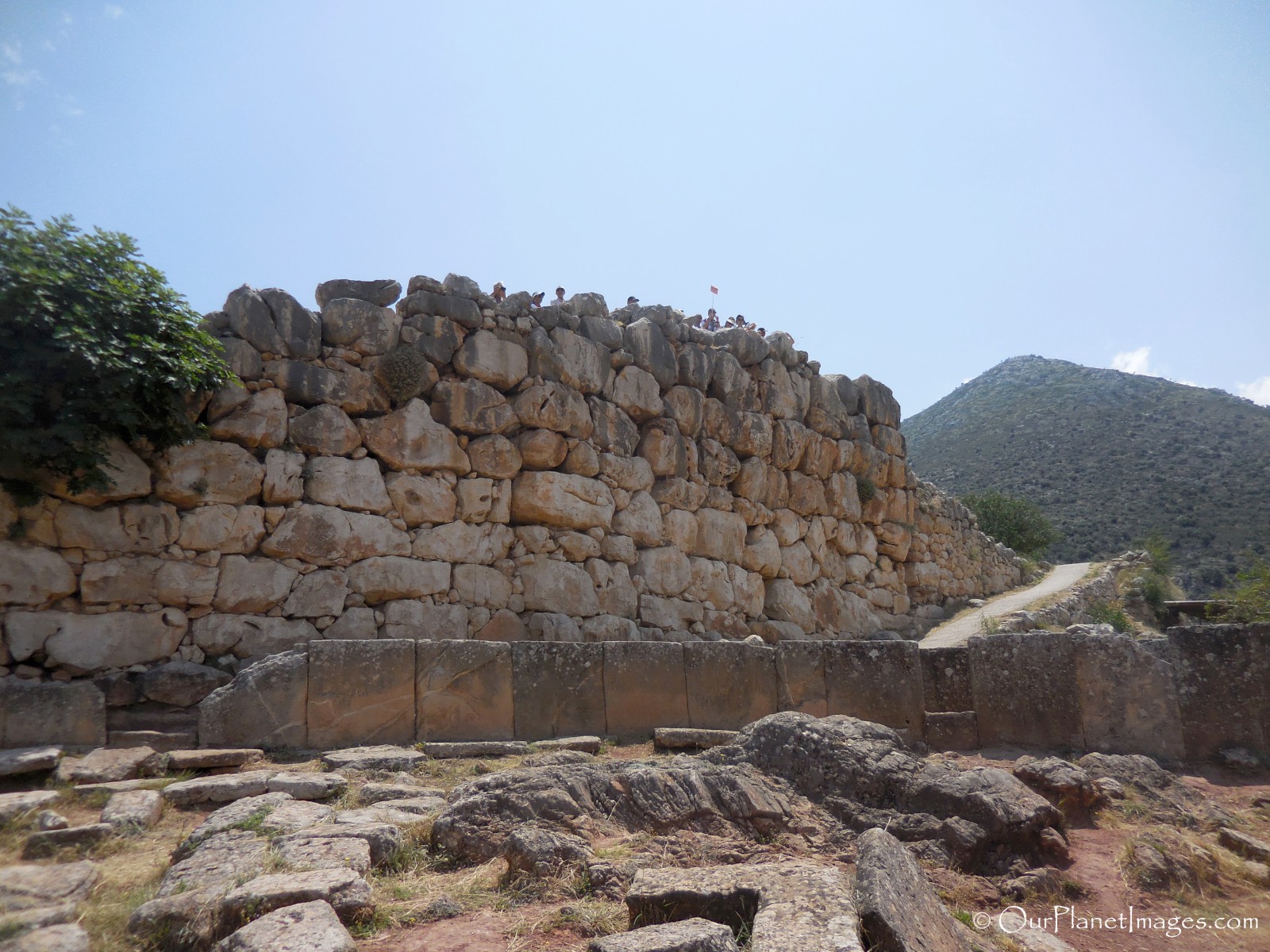
The Dust on My Shoes
Ancient archaeological sites have always fascinated me. The archaeological sites that I have visited range from mostly in ruins to very well preserved. The Mycenae Citadel falls somewhere in the middle. My opinion is that the majority of the site is mostly in ruins but some areas have been preserved and are interesting to see.
My favorite part of visiting the Mycenae Citadel was experiencing the Treasure of Atreus. This site is in very good condition and it is unlike anything that I have ever seen before. I felt a little like I was standing inside a giant igloo except the walls were built with stones and not blocks of ice.
I also enjoyed the Lion Gate. It was impressive and entering the compound through a gate with lions above it would have been a little intimidating.
I wish there were more places in good condition but the areas that are remaining were enough to see that the Mycenae Citadel was a substantial place in history.
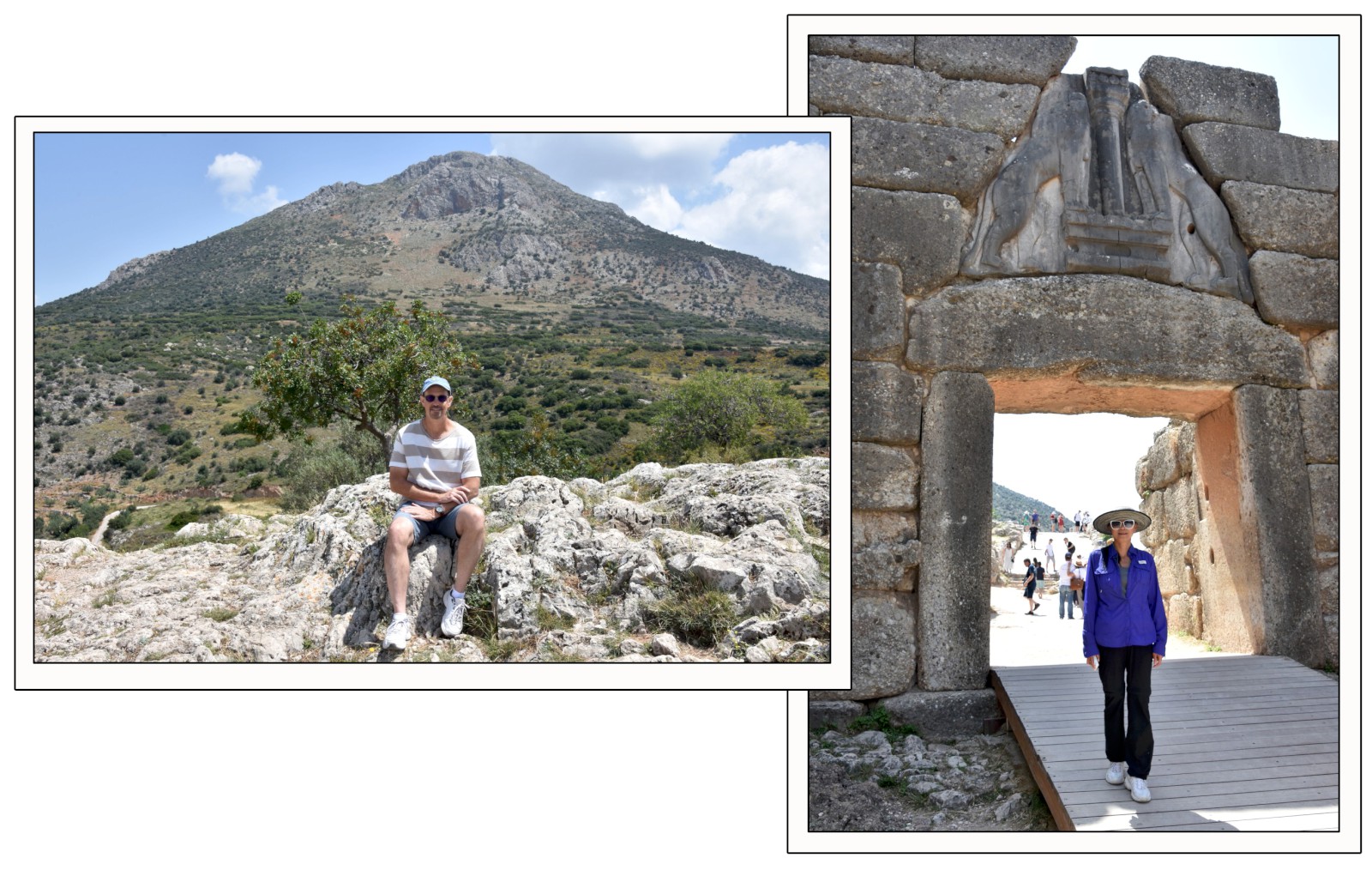
“It is nice to see well preserved historical sites but there is more to these sites than seeing preserved architecture. The real value from seeing these places is from seeing where significant events took place.”
